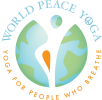Posture Practice - Going Deeper
Anatomy - Going Deeper
Healing Modalities
Stress Management
Breathwork - Going Deeper
Meditation - Going Deeper
Mindfulness
Subtle Body/Energy - Going Deeper
Yoga as a Business/Lifestyle - Going Deeper
Yoga Philosophy - Going Deeper
Plant-Sourced Living - Going Deeper
Twists and Core Review
Alignment
- Which alignment is to be prioritized in a twist – lengthening of the vertebrae in the spine or turning the shoulders further into the direction of the twist?
- Lengthening the spine.
- Describe the ideal alignment of the pelvis in a twisting pose.
- Hip points are even with each other.
- Describe the ideal alignment of the foot of the lifted leg in Ardha Matsyendrasana (Half Lord of the Fish Pose).
- The bottom of the foot is flat on the floor with toes pointing forward toward the short edge of the mat.
Anatomy
- What major muscles are engaging in a seated twist?
- Mainly the core and one side of the obliques.
- What major muscles make up the inner core?
- Inner obliques, transverse abdominis, diaphragm, pelvic floor, multifidus.
- Name two poses that stretch the obliques.
- Triangle Pose, Seated Twist.
Assists
- How might one assist a student in Twisted Triangle whose hips are uneven? Include how to ground the student.
- With consent, standing behind the student, ground them by holding their back leg between your thighs (bend your knees for more stability) and then use your hands to realign the hips.
- How might one assist a student in a Seated Twist whose weight is leaning into their back hand? Include how to ground the student.
- With consent, root them by bringing the side of one of your feet flush against their sacrum and your lower leg against their back. Bring the spine more vertical by gently pressing your lower leg against their back or telling them to bring the torso vertical. Your hands can be on the fronts of their shoulders, drawing them back (but do not push them into a deeper twist.)
- What does a teacher focus on in a spinal twist – lengthening the spine or deepening a student’s twist?
- Focus on lengthening the spine.
Props
- What props can help a student whose hand doesn’t reach the floor in Twisted Triangle?
- A block or two stacked blocks
- How might one use props for a student whose knee does not touch the floor in a Reclined Twist?
- A blanket or block can be placed under the knee.
- What prop might help a student with shoulders that are lifting in a Reclined Twist?
- A blanket under the lifted shoulder may be comforting.
Modifications
- Describe some modifications and/or variations of the Seated Twist, Ardha Matsyendrasana.
- Bottom leg stays extended; bottom leg bends and heel comes to opposite hip; front hand holds lifted leg; front upper arm hooks around lifted leg; both knees bend with bottoms of both feet flat on floor; a variation may be done in a chair
- Describe some modifications and/or variations of a Reclined Twist.
- Bottom leg stays straight; bottom leg bends with top leg; legs cross like eagle pose
- How might one modify a seated twist for someone in a bigger body?
- Take the legs wide or knees wide; sitting on a block may make more space.
Sequencing
- Are twists generally a neutralizing pose or a counter pose?
- Twists are neutralizing.
- Think of what muscles are stretched in a twist. With that in mind, twists help prepare the body for what category of poses?
- Backbending poses.
- Is it recommended to practice a deep and sustained back-bending pose directly after an intense sequence of core awakening poses? Why or why not?
- No, as the intense core work will have significantly tightened the muscles that need to stretch. A brief, simple backbend is fine, but gently warm up to any deep or sustained back-bending poses after intense core work.
